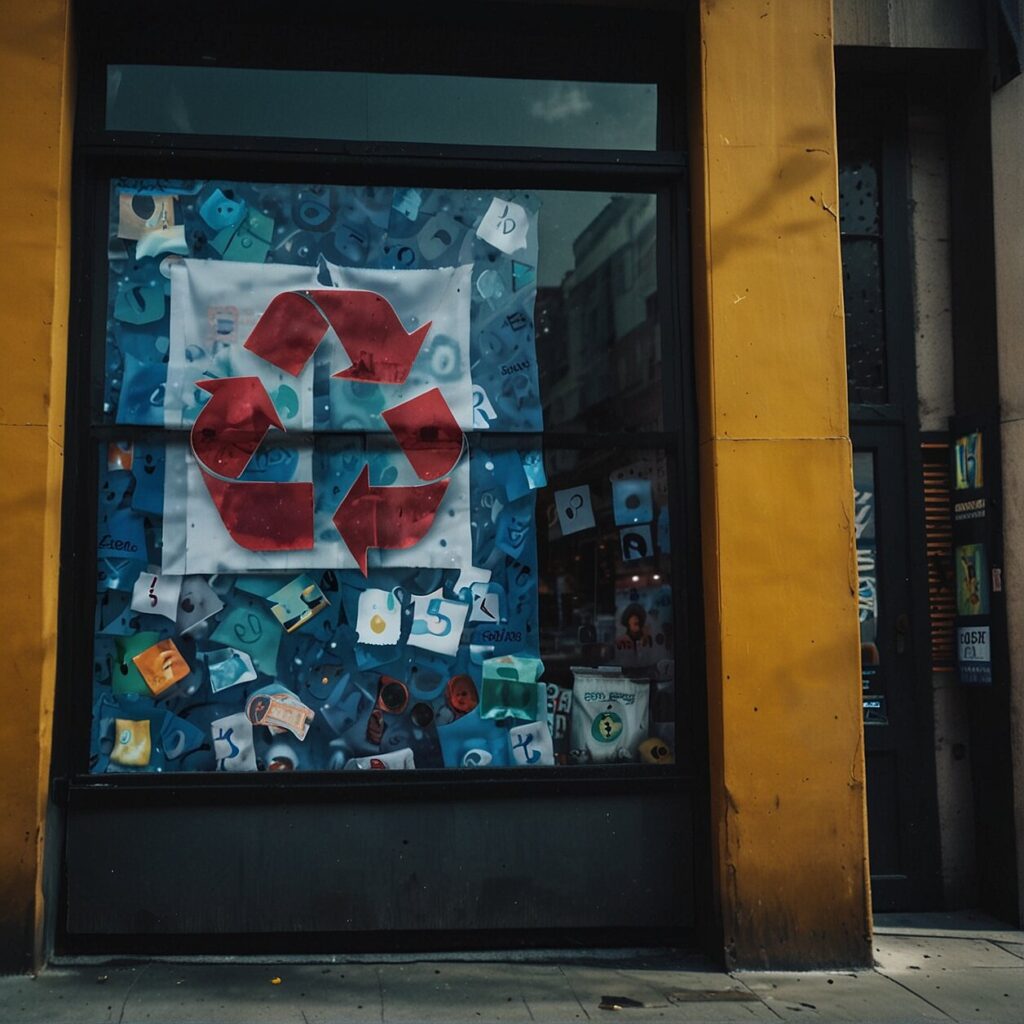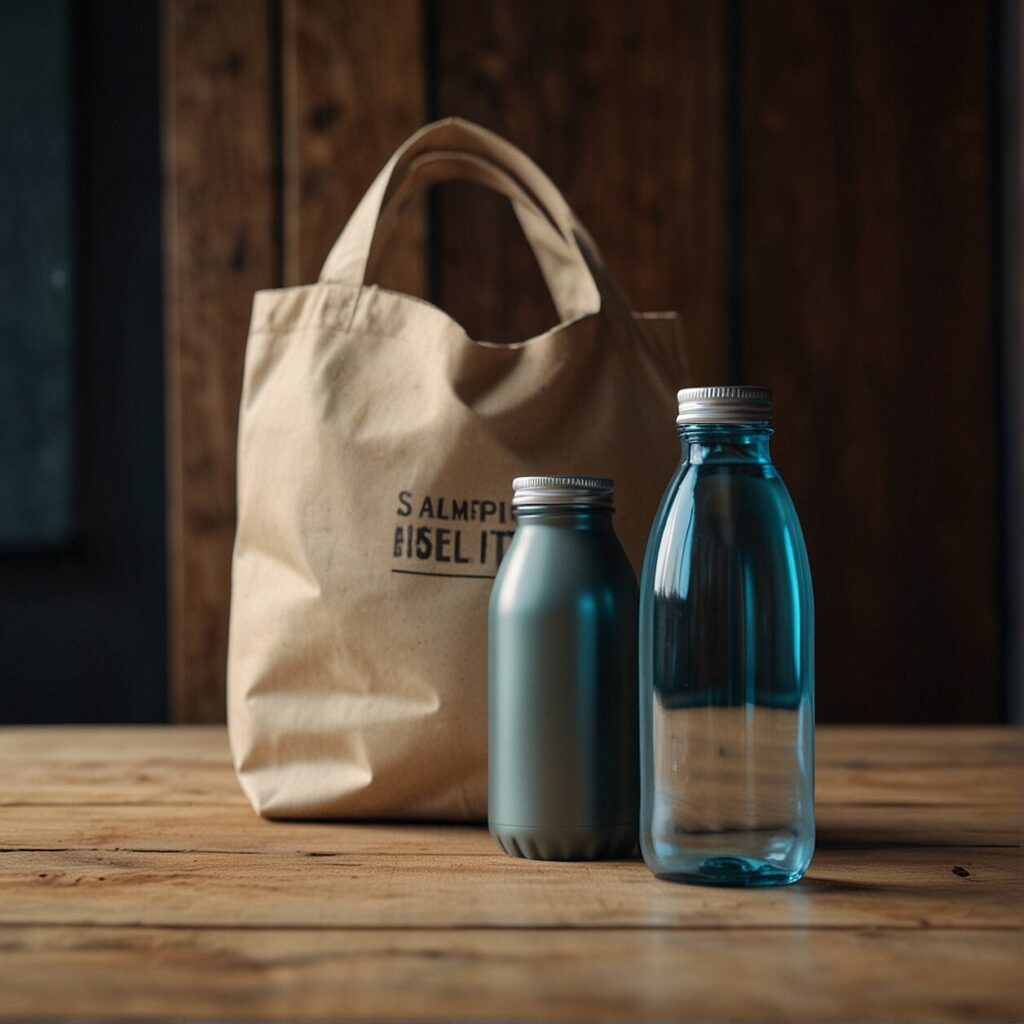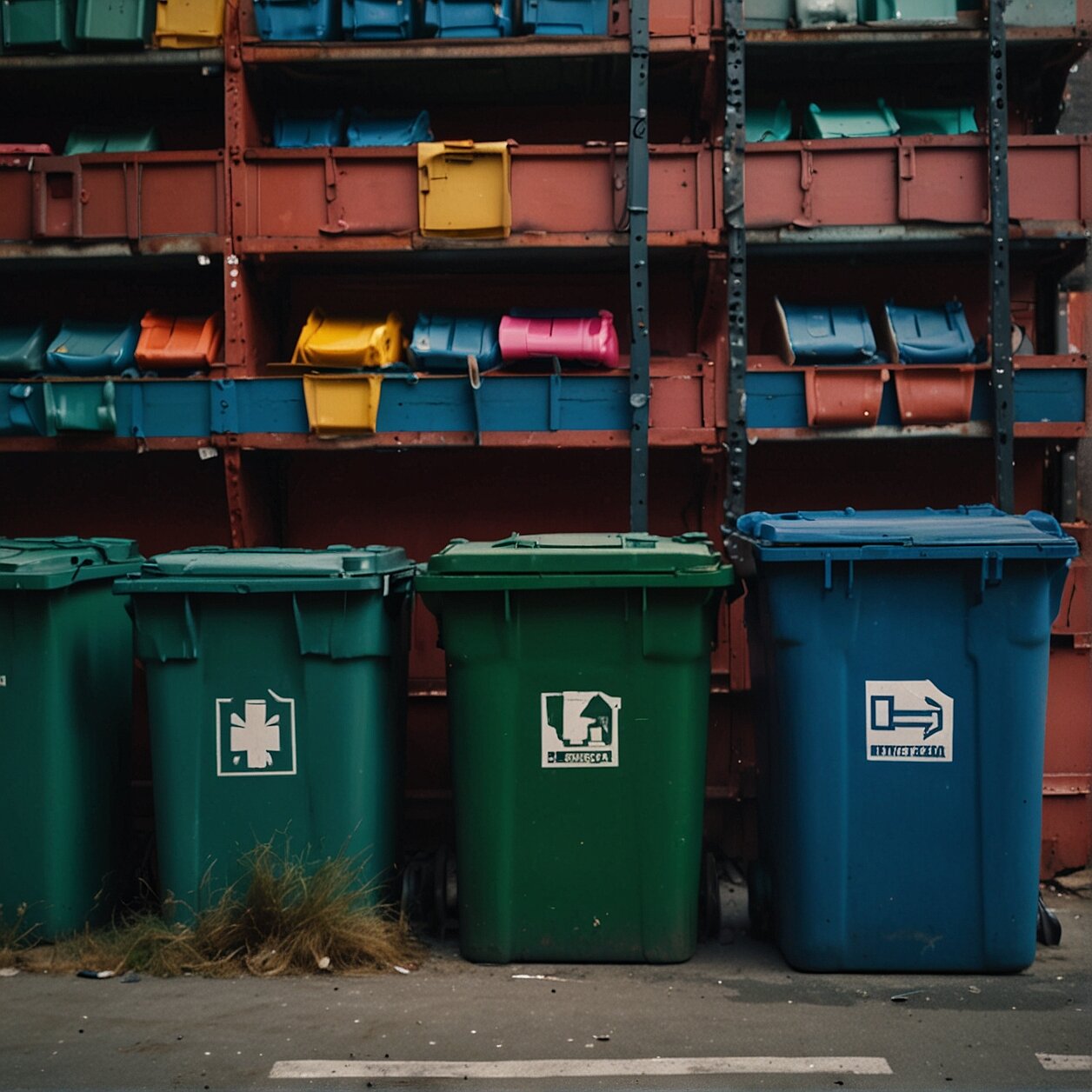Reducing Plastic Waste on Your Travels
If you’re reading this, it’s safe to assume you’re an avid traveler exploring ways to reduce your plastic footprint during your voyages. After all, you don’t want to contribute to the piles of waste choking our beautiful planet, do you?
Our globe-trotting adventures often come with an unintended side effect: plastic waste. From single-use bottles of water to disposable food containers, our travels can quickly add to the hundreds of millions of tons of plastic being produced annually. But, as a conscious traveler, you can indeed break free from this cycle.
In this article, we’ll embark on an informative journey to discover practical ways you can travel while minimizing plastic waste. From picking reusable over disposable items, making eco-friendly food choices, to opting for sustainable accommodations, we’ll guide you towards making your adventures greener and cleaner. So pack your bags (mindfully, of course), and let’s dive right in.
Understanding the Impact of Plastic Waste While Traveling
When we travel, it’s easy to overlook the small actions that over time, can significantly contribute to plastic pollution. These might include using plastic straws, takeaway containers from street vendors or bottled water for hydration. Each of these single-use plastics ends up either in landfills or, even worse, in our oceans. Plastics are non-biodegradable and can take hundreds of years to decompose, causing harm to the environment and marine life.
Moreover, the manufacturing process of these plastics requires energy and finite resources, emitting harmful greenhouse gases all the while. The cumulative environmental effect of plastic production, use, and waste, especially as a traveler, can be staggering. For instance, even the most luxurious resorts that pledge sustainability often use miniature plastic bottles for toiletries, contributing unnecessary plastic waste.
However, the good news is that we as travelers hold the potential to make a considerable difference. By consciously choosing to minimize plastic use, we can help reduce the demand for plastic production and the subsequent harm caused to our planet. Our travel experiences should leave only footprints, not a surf of plastic waste.
Understanding this impact is the first step towards conscious, sustainable travel. It’s not just about the environment; adopting sustainable practices can enrich your travel experience, enabling you to connect more deeply with the places you visit. So, let’s embark on this journey together and explore some practical ways to reduce our plastic footprints while traveling.

Choosing Reusable Over Disposable: A Traveler’s Guide
Our path to more sustainable, eco-conscious traveling begins with one clear-cut principle: opt for reusable instead of disposable. Just think about it – each single-use plastic bottle, takeout container, or utensil we avoid, we’re keeping one more piece of plastic out of our oceans and landfills. It’s a simple step, but one that can have a significant bearing on our planet’s health if we all commit to it.
At first, this may seem like a daunting task. How do we steer clear of the ubiquitous disposable plastics while embarking on our journeys? As it turns out, the answer lies in thoughtful preparation and smart choices.
Start your trip already armed with a refillable water bottle. This will not only keep you hydrated but also means you won’t have to rely on store-bought bottled water. You might also consider packing reusable utensils and containers, these can come in handy when you’re sampling local street food or need a snack on the go. These containers are usually lightweight and compact, so they won’t take up much space in your luggage.
Moreover, investing in solid toiletries like shampoo and soap bars, toothpaste tablets, or even reusable makeup remover cloths, can significantly reduce your reliance on single-use plastics in your day-to-day hygiene routine. These options are not only eco-friendly, but they also come in travel-friendly sizes, help you save space in your luggage, and can even save you money in the long run.
Also, it pays to remember that reducing plastic waste isn’t limited to just your own use. When ordering food or drinks, it’s worth asking if they can be served in your own container or cup, or at least without any unnecessary plastic wrappers or straws.
Switching from disposable to reusable is an easy yet impactful decision we can all make. Not only would you be doing your part in preserving the environment, but also experiencing travel in a more meaningful and responsible manner. Slow down, enjoy your trip, and leave behind memories, not plastic waste.
Green Food Choices: Reducing Plastic Waste During Meal Times
When we think about pollution, we may not immediately consider the impact of our food choices. However, meal times can often be the biggest culprit when it comes to producing plastic waste. Here are some steps you can take to enjoy your meals, while minimizing your environmental footprint.
Carry your own reusable container and utensils: One of the simplest changes you can make is to bring your own container and utensils for street food, takeaways or leftovers. This single change can drastically reduce your plastic waste. It also guarantees you have a reliable set of cutlery and a sturdy container at all times.
Choose vendors that use alternative packaging: Many food vendors around the world have begun using more sustainable materials for their packaging such as banana leaves or recycled paper. Enjoy your food from these outlets as it will help you minimize your plastic waste and also promote businesses that adopt sustainable practices.
Opt for local cuisine: Imported options often come with extra packaging which adds to your waste. Choosing to dine at local establishments helps you avoid excessive packing, and it also gives you a delicious way to explore different cultures and support local economies.
Steer clear of single-serving options: Many foods and beverages are available in single-serving sizes that are heavily packaged. Instead of these, consider larger options or fresh alternatives. This will also help you save money in the long run.
Reducing plastic waste during meal times might appear challenging at first, but it’s truly as easy as making a few simple changes to your habits. The best part is, these changes not only benefit the environment, but often lead to a more authentic and enriching travel experience. Bon appétit!
Where to Store Waste: Efficient Methods for Traveling Plastic-Free
Traveling without producing excessive plastic waste doesn’t mean you skip the essentials or let trash pile up. Clever strategies for waste storage can help you put important sustainability principles into action, even when you’re on the go.
One efficient, traveler-friendly solution is investing in a high-quality, reusable bag to collect any unavoidable waste produced during your trip. This bag functions as your mobile, temporary waste bin, helping reduce litter while demonstrating a commitment to the health of our environment and wildlife. But remember to empty it responsibly and recycle where possible!
Next comes proper food storage. Instead of resorting to single-use plastics for snacking on the go, opt for reusable containers. They are more eco-friendly, safe for use, and can be washed and reused throughout your trip. Buying food in bulk, or preparing your own meals can significantly reduce the amount of packaging waste produced.
Remember, being eco-conscious doesn’t mean sacrificing convenience or hygiene. For instance, bamboo utensils are a lightweight, eco-friendly alternative to plastic cutlery, and can be stored in their own carry pouch, preventing potential mess in your bag. Similarly, reusable silicone food covers are an excellent replacement for the plastic wrap.
The secret lies in being proactive and prepared. Equip yourself with necessary items that promote waste reduction, and remember every little action counts towards a larger, planet-friendly mission. Happy eco-traveling!

Traveling Light and Green: Essential Items for Eco-Conscious Tourists
Embarking on an eco-conscious journey begins with choosing the items you carry with you. Packing light and green involves not only reducing your luggage weight but also ensuring your items are kind to the environment. So, where do you start?
First off, consider investing in travel essentials designed with sustainability in mind. Companies like Pact, a sustainable clothing company, provide a range of carbon-neutral and fair-trade travel staples. From organic cotton garments to other sustainable materials, these items are designed to reduce your environmental footprint.
Outdoor adventures often require specific gear. Consider products that are durable and eco-friendly, such as camping stoves, binoculars, sketchbooks or cameras. Hygiene products aren’t left out either—bring along biodegradable soaps and lotions that won’t harm nature whenever you use them.
Switching to reusable items is another effective way to cut back on plastic waste. Swap single-use items such as water bottles and bags for reusable alternatives, and not only will you be reducing waste but also saving money in the long run. Remember, every small change makes a big difference.
Finally, when it comes to booking your accommodations, choose to support platforms that value sustainability. Eco-friendly booking sites like Bookitgreen and Bookdifferent offer a selection of accommodations that keep environmental considerations in mind. This way, you can sleep comfortably knowing that you’ve made a conscientious choice.
Whether it’s switching to a reusable water bottle or choosing sustainable travel wear, these small changes in our travel behavior can lead to significant reductions in plastic waste. After all, our adventures should leave memories, not footprints.
FAQ’S
In our quest to redefine traveling habits, you might have some questions bubbling up. Don’t worry! We’ve gathered some of the most frequently asked questions about the topic. Whether it’s about packing smartly, staying hydrated without relying on plastic bottles, adopting effective habits, or understanding the cost-effectiveness of reducing plastic waste during journeys, we got you covered! So, let’s dive into your queries to give you clear, practical, and actionable answers.
What are some reusable alternatives to common plastic items used during travel?
Embarking on a plastic-free adventure might seem daunting initially, but with a few smart and sustainable swaps, it becomes second nature. The key is opting for reusable versions of the plastic items we often use during travels.
Start by replacing single-use water bottles with a sturdy, reusable one. This will save countless bottles from ending up in the landfill, and as a nice side effect, some cafés and restaurants will even refill it for free. Similarly, invest in a good quality travel mug for your morning coffees or teas on the run.
Avoid disposable toiletries and bring your own, housed in reusable bottles. Consider bar soaps, shampoos, and conditioners that come in minimal, recyclable, or compostable packaging. For oral care, swap a plastic toothbrush for a bamboo one, and consider using toothpaste tablets or powder in recyclable packaging.
Eating on the go doesn’t have to be a plastic fest either. Pack a meal in a reusable lunch box, and bring your own cutlery wrapped in a cloth napkin instead of relying on single-use utensils. If street food is on the cards, carry reusable containers to transport your food – stall owners are usually happy to accommodate.
And don’t forget about shopping bags. Pack a couple of lightweight cotton totes for any spontaneous shopping or grocery runs.
Finding alternatives for common plastic items isn’t just about reducing waste. It’s also an opportunity to discover more sustainable, thoughtful ways of living – even when we’re on the move.
What are some tips for packing to minimize plastic waste?
When packing for your travel, there are plenty of ways to cut down on plastic and contribute positively to the environment. Here are handy tips to help you pack sustainably:
- Use a Reusable Water Bottle: Pack a refillable water bottle to avoid buying single-use plastic bottles. Most airports, hotels, and many tourist centers now have water refill stations, making this switch easy and convenient.
- Invest in Eco-Friendly Toiletries: Instead of travel-size disposable items, opt for refillable toiletry bottles. You can also switch to solid toiletries like soap bars, shampoo bars, and even toothpaste tabs to completely eliminate plastic waste.
- Consider Sustainable Clothing: Pack garments made from organic cotton or other sustainable materials. Not only are these more eco-friendly, but they’re often also lighter and more compact, saving you luggage space and weight.
- Avoid Single-Use Plastic Bags: Take along a few reusable shopping bags or totes. These are great for grocery shopping or even for carrying personal items to the beach or other day trips.
- Prepare for Street Food: Street food is a major part of the travel experience in many destinations. Bring your own reusable container and utensils to avoid the disposables commonly used by vendors.
- Adopt the Zero Waste Approach: This elevates your efforts from merely reusable to zero waste. Pack items that can be composted or recycled at the end of their life rather than those that will end up in a landfill.
How can I stay hydrated without buying bottled water when traveling?
Staying hydrated on your travels doesn’t have to come at a cost to the environment. There’s a couple of solutions to easing the dependency on single-use water bottles while ensuring you’re getting enough H2O every day.
First and foremost, try investing in a refillable water bottle. These come in a variety of materials, sizes, and styles to suit all types of travelers out there. Just fill it up before leaving your accommodation in the morning and then top it up at water stations and cafes throughout the day. Many countries around the world are making it easier for tourists to access clean, free water, so take advantage of these facilities.
If you’re worried about the quality of the local water, look into portable water filtration systems. These compact devices can purify tap water, making it safe to drink anywhere in the world. They can be a bit of an investment, but they are completely worth it when you consider the convenience, peace of mind, and ecological benefits they bring.
And don’t forget! Opting for dine-in rather than take-out when possible also helps in reducing plastic waste, while also providing potential opportunities to refill your bottle from safe water sources at the establishments.
In a nutshell, with some foresight and good habits, you can ensure you stay hydrated while significantly reducing your plastic footprint during your travels. Happy journey!
What are some effective habits to adopt for reducing plastic waste on trips?
Great question! There are indeed quite a few habits you could adopt when traveling to lessen your plastic waste production. Let’s talk about them.
One of the most beneficial habits is to ‘refuse’ – simply decline plastic items like straws, bags, or cutlery when they’re offered to you at restaurants or shops. You can carry your own reusable alternatives, so you won’t have a need for these disposable options.
Next, try to go digital for tickets, boarding passes, and even maps to reduce the need for paper printouts encased in plastic sleeves. Opting for electronic versions is an easy and effective way to ‘reduce’.
‘Reusing’ plastic items, when you cannot avoid them, is another beneficial habit. Items like plastic bags, bottles, or takeaway containers can often be used multiple times before they need to be disposed of.
Lastly, ‘recycle’ properly. If recycling facilities are available – take full advantage of them. Every piece of plastic you recycle is one less in our environment.
Remember, every little bit counts. These changes can seem small, but when multiplied by thousands and millions of travelers across the world, they can make a huge difference. So, adopt these responsible habits and contribute to making your travels more eco-friendly.
Can reducing plastic waste make my travels more cost-effective?
Definitely! Minimizing your plastic waste can certainly lead to cost savings during your travels. Let’s break this down:
First, investing in a reusable water bottle implies that you no longer need to buy bottled water throughout your trip. This alone can save you a considerable amount of money, especially in touristy spots where prices can be inflated. Plus, you’d be amazed at how many places offer free water refill stations.
Secondly, packing your own reusable toiletries like soap and shampoo dispensers eliminates the need for buying travel-sized items or relying on the often low quality, single-use toiletries provided by hotels. This reduction in waste can equate to significant savings across multiple trips.
In addition, by using reusable shopping bags instead of paying for plastic ones, and by choosing to eat in at restaurants instead of opting for take-out with all its associated packaging, you’ll find yourself cutting both costs and plastic waste.
Lastly, a commitment to producing less plastic waste often comes with a mindset shift towards greater sustainability. This may lead to decisions like staying in eco-friendly accommodations, choosing efficient modes of transport, and eating locally sourced food. While some of these changes may require an upfront investment, they will often lead to longer-term savings and create a positive impact on the local economy.
So, reducing your plastic waste is not only a boon for the environment, it’s also friendly on your wallet.







